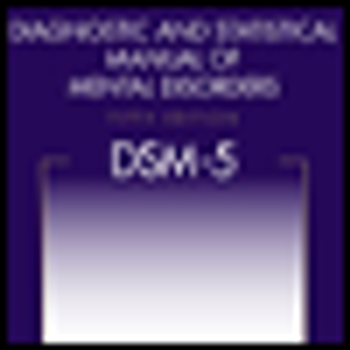
Do not be surprised if you hear more about hybrid models of psychiatric diagnoses included in DSM-5. The categorical and dimensional model approaches are 2 sides of the same coin as you look at the same patient from 2 different angles.

Do not be surprised if you hear more about hybrid models of psychiatric diagnoses included in DSM-5. The categorical and dimensional model approaches are 2 sides of the same coin as you look at the same patient from 2 different angles.

Ringing the Bell to Save the Bereavement Exclusion.

A team approach, continually balancing the views of the psychopharmacologist, psychologist, social worker, family practice resident, and patient is the clinical Promised Land.

"Internet Addiction" may soon spread like wildfire. All the elements favoring fad generation are in place . . . the profusion of alarming books; the breathless articles in magazines and newspapers; extensive TV exposure; ubiquitous blogs; the springing up of unproven treatment programs; the availability of millions of potential patients; and an exuberant trumpeting by newly minted "thought leading" researchers and clinicians. So far, DSM-5 has provided the only restraint.

We do not need psychiatrists who fit people into categories and slots and treat them as if they are robots, according to the dictates of a recipe book called “The Diagnostic and Statistical Manual.”

In this podcast, Dr Nada Stotland makes a compelling case for keeping premenstrual dysphoric disorder out of DSM-5.

For the first time in its history, DSM-5 has shown some flexibility and capacity to correct itself. Hopefully, this is just the beginning of what will turn out to be a number of other necessary DSM-5 retreats.

The APA has invited public comment on the proposed criteria for the upcoming DSM-5 for the third and final time. From May 2 until June 15, public responses will be considered by the DSM-5 Work Groups.

With DSM-5 scheduled for publication a little more than a year from now, we may safely assume that, barring unannounced surprises from, say, the APA Scientific Review Committee, what we will see on the DSM-5 Web site is what we will get. With that in mind it’s time to review what we will indeed get.

Until yesterday, there were only 2 reasons to stick with the projected date of DSM-5 publication (May 2013). The first just dropped out.

Much of the controversy on the relationship between grief and depression following recent bereavement has focused on whether the so-called “bereavement exclusion” in DSM-IV should be eliminated, as some have proposed, in the DSM-5.

My recent blog stimulated 2 interesting responses that illustrate the stark contrast between DSM-5 fantasy and DSM-5 reality. Together they document why publication must be delayed if DSM-5 is to be set right.

My three criticisms of DSM-5 have been: (1) risky suggestions; (2) bad writing; and (3) poor planning and disorganization.

In this guest blog, Dr Deirdre D'Orazio responds to a recent commentary by Dr Allen Frances on conducting evaluations of potential sexually violent predators.

The New York Times ran a front-page story regarding numerous controversies surrounding the DSM-5, most notably, the issue of eliminating the so-called bereavement exclusion in diagnosing a major depressive episode. Here, Dr Pies responds to Dr John Grohol, Psychologist and Editor of the Psychcentral Web site.

My biggest concern regarding DSM-5 is that it will dramatically increase the rates of mental disorder by cheapening the currency of psychiatric diagnosis . . .The whole purpose of field-testing is to identify and correct problems in the preliminary DSM suggestions before they become set in stone as official guides to diagnostic practice.

The designer of the DSM-5 Field Trials has just written a telling commentary in the American Journal of Psychiatry. She makes what I consider to be 2 basic errors that reveal the fundamental worthlessness of these Field Trials and their inability to provide any information that will be useful for DSM-5 decision making.

Accurate diagnosis is absolutely crucial in SVP hearings because the potential outcome is so consequential-involuntary incarceration in a psychiatric hospital that may well last a lifetime. In no other clinical or forensic situation does so much ride on the presence or absence of a psychiatric diagnosis.

Critics of DSM-5 argue that the expansion of diagnostic criteria may increase the number of “mentally ill” individuals and/or pathologize “normal” behavior, and lead to the possibility that thousands-if not millions-of new patients will be exposed to medications which may cause more harm than good.

This brief editorial clarifies the position of Psychiatric Times with regard to our intent behind posting the many blogs about DSM-5 that appear on our Web site, www.PsychiatricTimes.com.

On November 21, 2011, John Oldham, MD, president of the American Psychiatric Association (APA), wrote a response letter to Don W. Locke, EdD, president of the American Counseling Association, who had some concerns with proposed revisions for DSM-5.

Some months ago, I received a stern admonition from my family doctor. My fasting blood sugar of 99 mg/dL was “right on the border”, he said, and I had better work on bringing it down. “But,” I protested, “when I was in medical school (in the 70s), the normal FBS range went up to 110 mg/dL!” "Well,” he replied a bit huffily, “they changed the criteria!”

The users’ revolt against DSM-5 marches on and just became a much, much bigger parade.

News flash From Medscape Medical News-“APA Answers DSM-5 Critics”-a defense of DSM-5 offered by Darrel A. Regier, MD, vice-chair of the DSM-5 Task Force.

When it comes to DSM-5, experience has proven conclusively that the APA will not attend to the science, evaluate the risks, or listen to reason. A user’s revolt has become the last and only hope for derailing the worst of the DSM-5 suggestions.